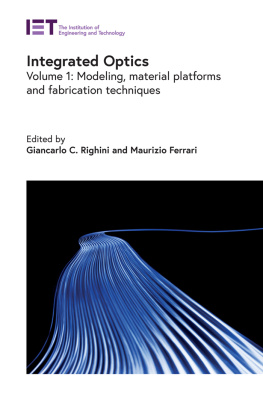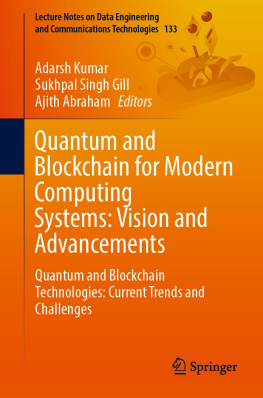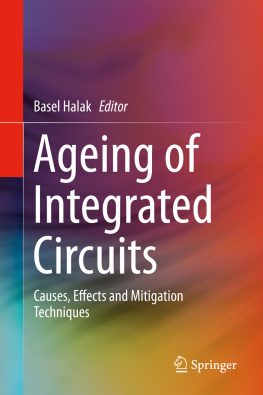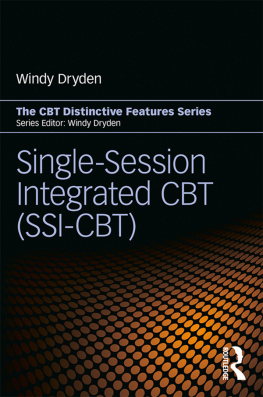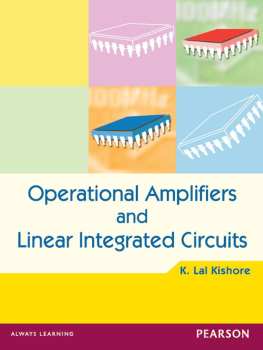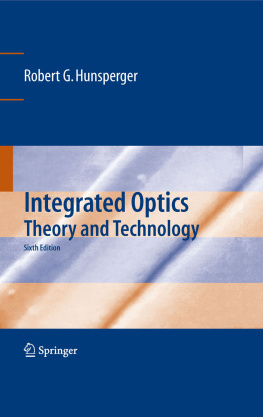Contents
Contents
Single-photon Detection for Data Communication and Quantum Systems
Michael Hofbauer, Kerstin Schneider-Hornstein & Horst Zimmermann
Technische Universitt Wien, Vienna, Austria
IOP Publishing, Bristol, UK
IOP Publishing Ltd 2021
All rights reserved. No part of this publication may be reproduced, stored in a retrieval system or transmitted in any form or by any means, electronic, mechanical, photocopying, recording or otherwise, without the prior permission of the publisher, or as expressly permitted by law or under terms agreed with the appropriate rights organization. Multiple copying is permitted in accordance with the terms of licences issued by the Copyright Licensing Agency, the Copyright Clearance Centre and other reproduction rights organizations.
Cover image 2018 IEEE. Reprinted, with permission, from B Steindl, M Hofbauer, K Schneider-Hornstein, P Brandl and H Zimmermann, Single-Photon Avalanche Photodiode Based Fiber Optic Receiver for Up to 200 Mb/s, in IEEE Journal of Selected Topics in Quantum Electronics, vol. 24, no. 2, pp. 1-8, March-April 2018, doi: 10.1109/JSTQE.2017.2764682.
Permission to make use of IOP Publishing content other than as set out above may be sought at .
Michael Hofbauer, Kerstin Schneider-Hornstein and Horst Zimmermann have asserted their right to be identified as the authors of this work in accordance with sections 77 and 78 of the Copyright, Designs and Patents Act 1988.
ISBN 978-0-7503-2584-4 (ebook)
ISBN 978-0-7503-2582-0 (print)
ISBN 978-0-7503-2585-1 (myPrint)
ISBN 978-0-7503-2583-7 (mobi)
DOI 10.1088/978-0-7503-2584-4
Version: 20211201
IOP ebooks
British Library Cataloguing-in-Publication Data: A catalogue record for this book is available from the British Library.
Published by IOP Publishing, wholly owned by The Institute of Physics, London
IOP Publishing, Temple Circus, Temple Way, Bristol, BS1 6HG, UK
US Office: IOP Publishing, Inc., 190 North Independence Mall West, Suite 601, Philadelphia, PA 19106, USA
IOP Series in Advances in Optics, Photonics and Optoelectronics
SERIES EDITOR
Professor Rajpal S Sirohi Consultant Scientist
About the Editor
Rajpal S Sirohi is currently working as a faculty member in the Department of Physics, Alabama A&M University, Huntsville, Alabama (USA). Prior to this, he was a consultant scientist at the Indian Institute of Science, Bangalore, and before that, he was chair professor in the Department of Physics, Tezpur University, Assam. From 2000 to 2011, he was an academic administrator, being vice chancellor to a couple of universities and the director of the Indian Institute of Technology, Delhi. He is the recipient of many international and national awards and the author of more than 400 papers. Dr Sirohi is involved with research into optical metrology, optical instrumentation, holography, and speckle phenomena.
About the series
Optics, photonics, and optoelectronics are enabling technologies in many branches of science, engineering, medicine and agriculture. These technologies have reshaped our outlook and our ways of interacting with each other and have brought people closer. They help us to understand many phenomena better and provide a deeper insight in the functioning of nature. Further, these technologies themselves are evolving at a rapid rate. Their applications encompass a very large spatial range from the nanometer scale to the astronomical scale and a very large temporal range from picoseconds to billions of years. This series on advances in optics, photonics, and optoelectronics aims to cover topics that are of interest to both academia and industry. Some of the topics that the books in the series will cover include biophotonics and medical imaging, devices, electromagnetics, fiber optics, information storage, instrumentation, light sources, CCD and CMOS imagers, metamaterials, optical metrology, optical networks, photovoltaics, freeform optics and its evaluation, singular optics, cryptography, and sensors.
About IOP ebooks
Authors are encouraged to take advantage of the features made possible by electronic publication to enhance the reader experience through the use of colour, animation, and video, and incorporating supplementary files in their work.
Do you have an idea for a book you'd like to explore?
For further information and details of submitting book proposals see .
This book is dedicated to our families.
Preface
The era of photodiode integrated circuits (PDICs) started in the 1990s with their application in audio CD players, CD-ROMs, and DVD systems; this occurred because the bandwidths and transimpedance of optical sensors consisting of discrete photodiodes/photodiode arrays and amplifier integrated circuits (ICs) reached a limit at that time. Since then, rapid progress has been made in the bandwidth/data rate and quantum efficiency/responsivity of integrated photodiodes and sensor ICs. The first quantum leap was the integrated pintrinsicn photodiode. Avalanche photodiodes (APDs) in the linear mode then introduced the second step in performance gain. The newest quantum leap in integrated photodetectors took the form of APDs operated in the Geiger mode, in which the detection of single photons is possible.
Integrated photodiodes not only allowed increased bandwidth and transimpedance gains; they were essential for image sensors with high and very high numbers of pixels. Integrated photodiodes offered better immunity to electromagnetic interference, improved reliability, and, last but not least, they reduced the costs of many optical sensors.
Single-photon detection has been the subject of huge publicity in the research field for more than a decade; much progress has been made using single-photon avalanche diodes (SPADs) integrated into complementary metaloxidesemiconductor (CMOS) chips. Many publications cover the topics of SPADs and SPAD sensor ICs for biomedical applications, imaging, and distance measurement/three-dimensional sensors. Publications on the use of integrated SPADs for quantum communications, quantum cryptography, and quantum computer applications seem to be underrepresented. In addition, there is a new trend toward SPAD-based optical receivers for data and free-space communications. This book will therefore focus on the use of SPAD ICs in data communications and quantum systems.
The authors would like to thank Ashley Gasque from IOP Publishing for proposing the idea for this book. They also wish to thank Dr Bernhard Goll, Dr Hiwa Mahmoudi, Dr Reinhard Enne, Dr Bernhard Steindl, Dr Dinka Milovancev, Dr Alija Dervi, and Saman Kohneh Poushi from our institute for their important and excellent contributions to our work on integrated SPADs. In addition, we would like to thank Wolfgang Einbrodt, Dr Konrad Bach, Detlef Sommer, Dr Alexander Zimmer, and Dr Daniel Gbler from XFAB Semiconductor Foundries for their long cooperation and for enabling huge progress with silicon PDICs.
Michael Hofbauer, Kerstin Schneider-Hornstein and Horst Zimmermann
Vienna, Austria
Author biographies
Michael Hofbauer


